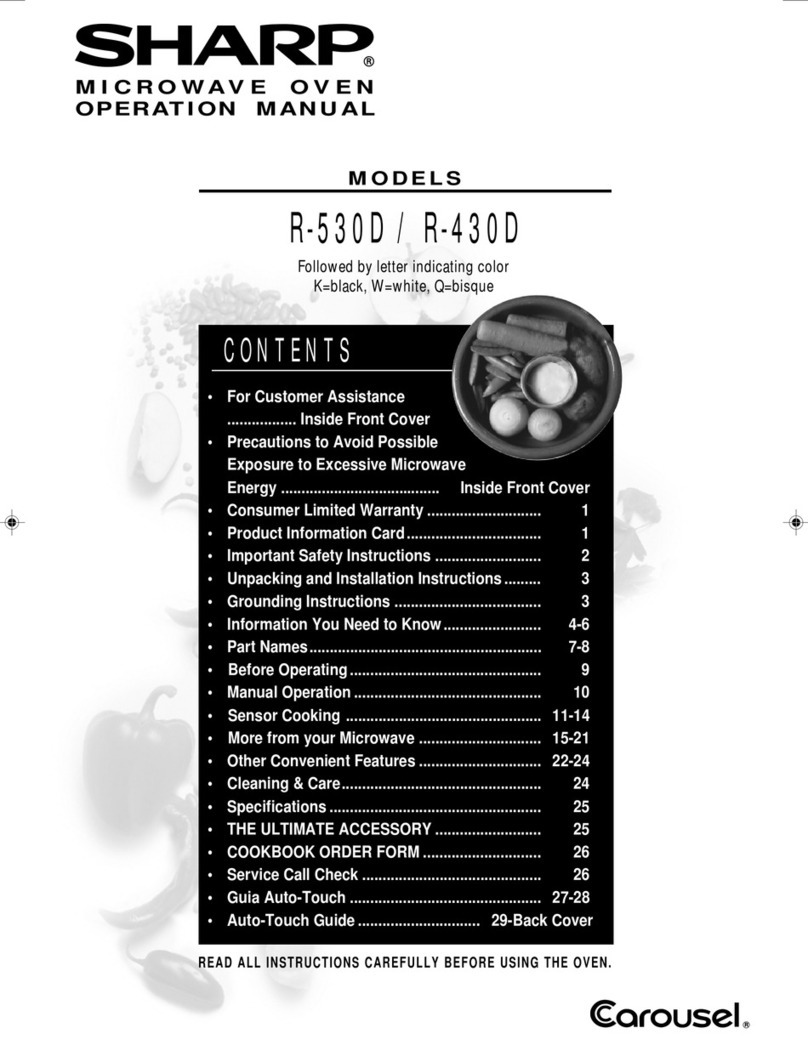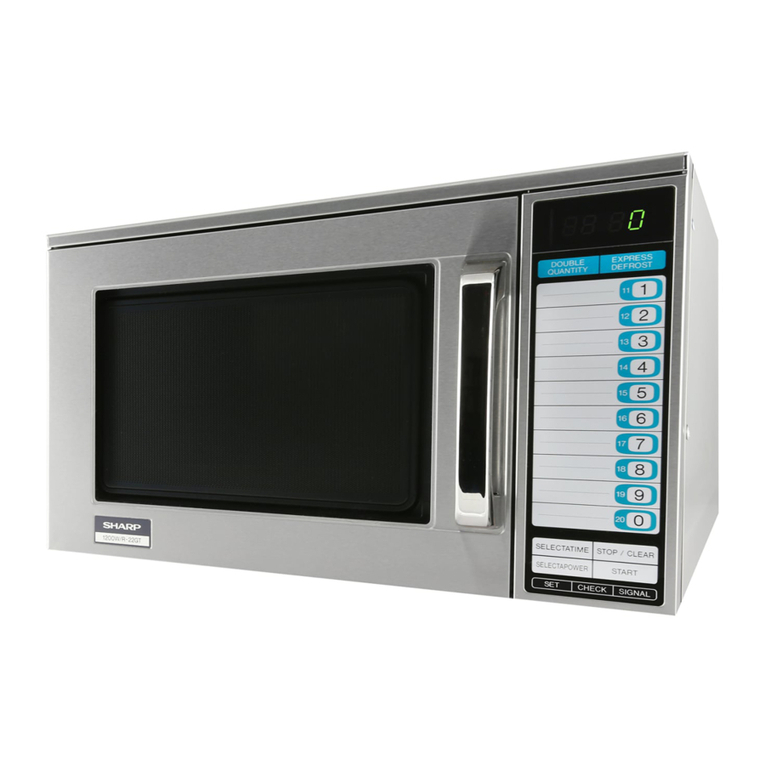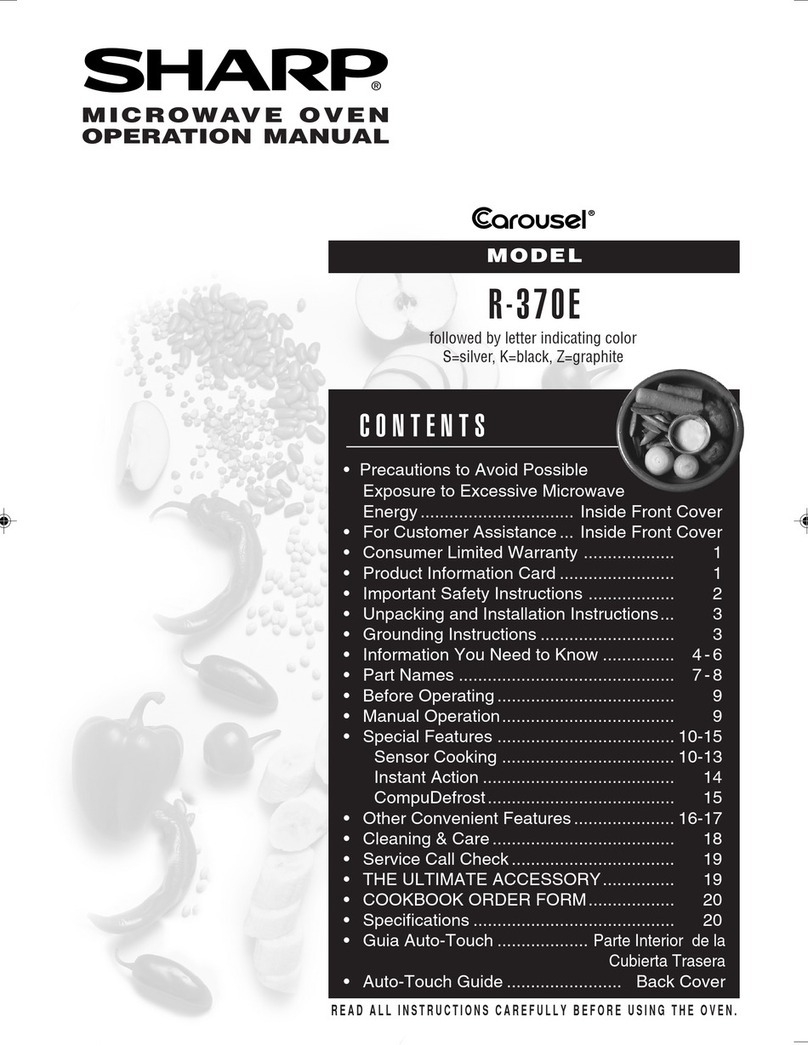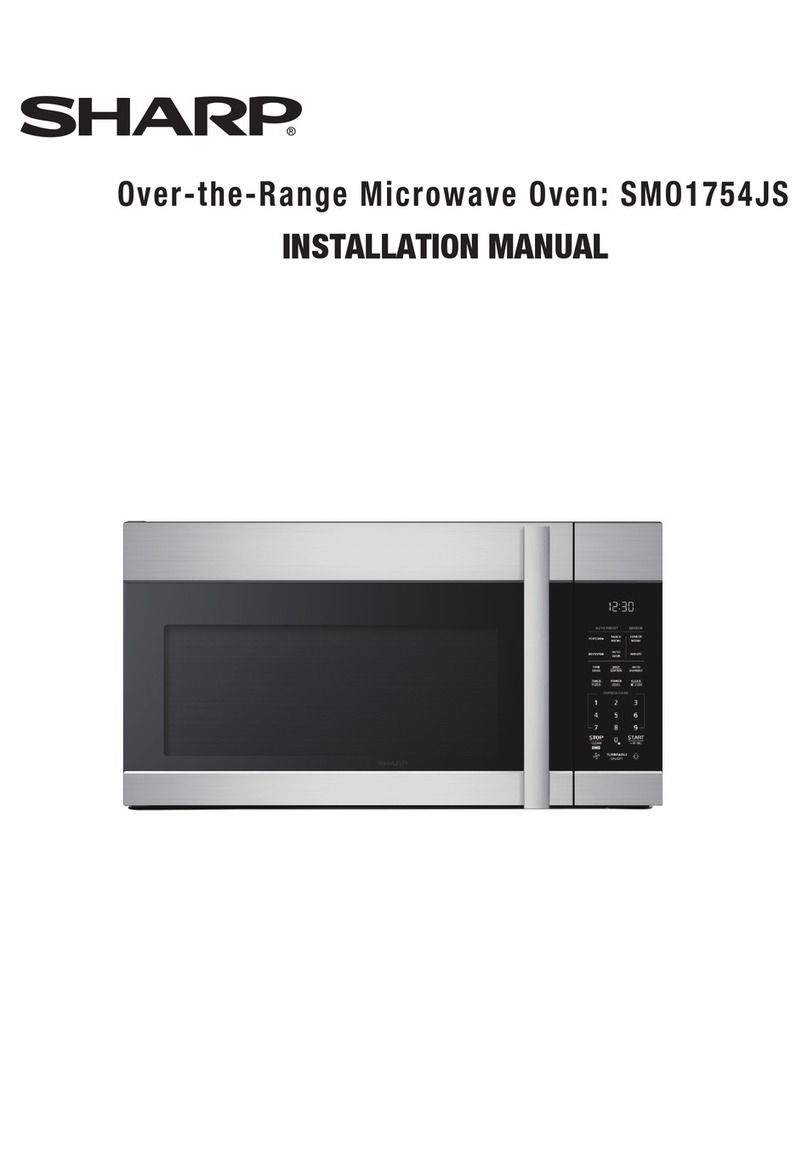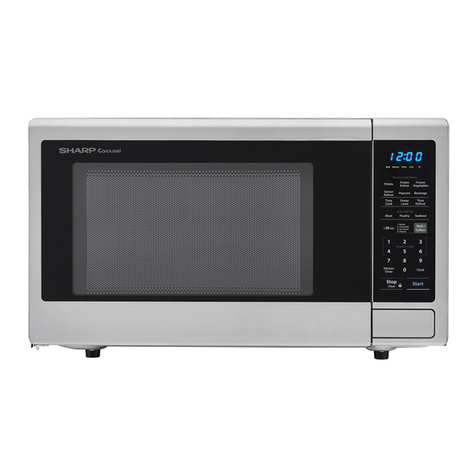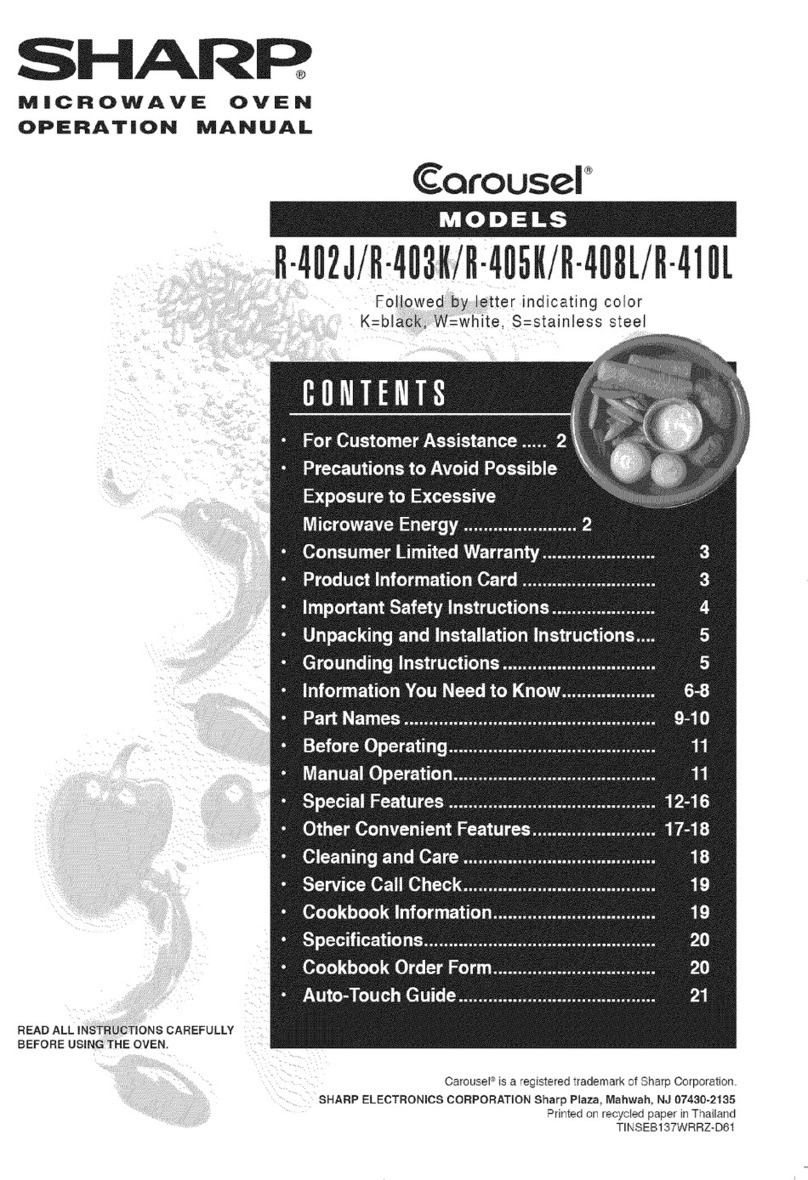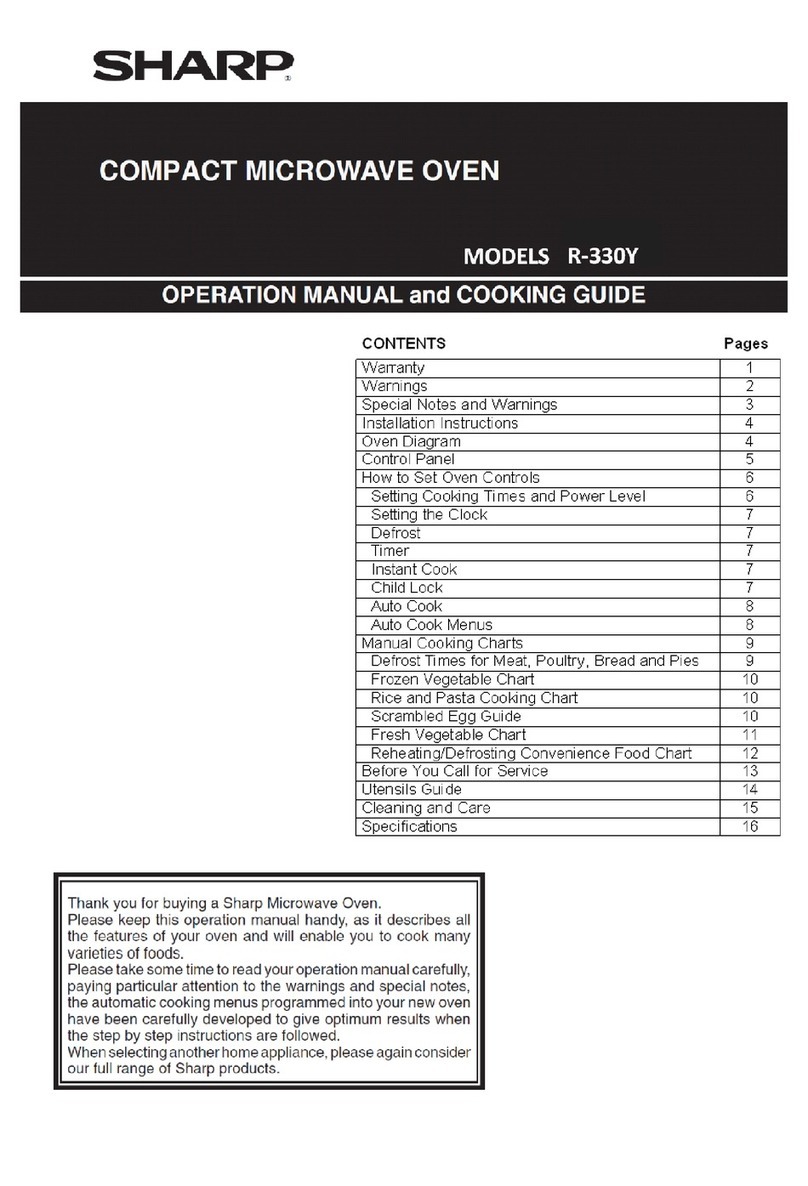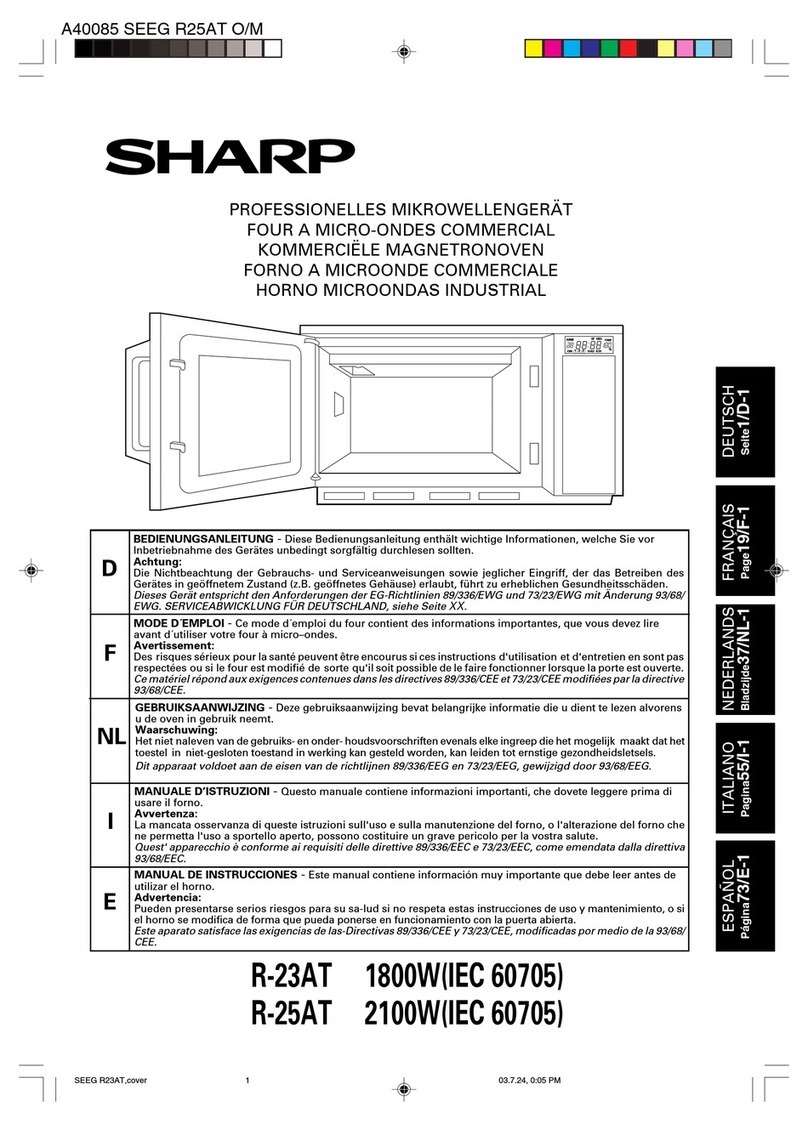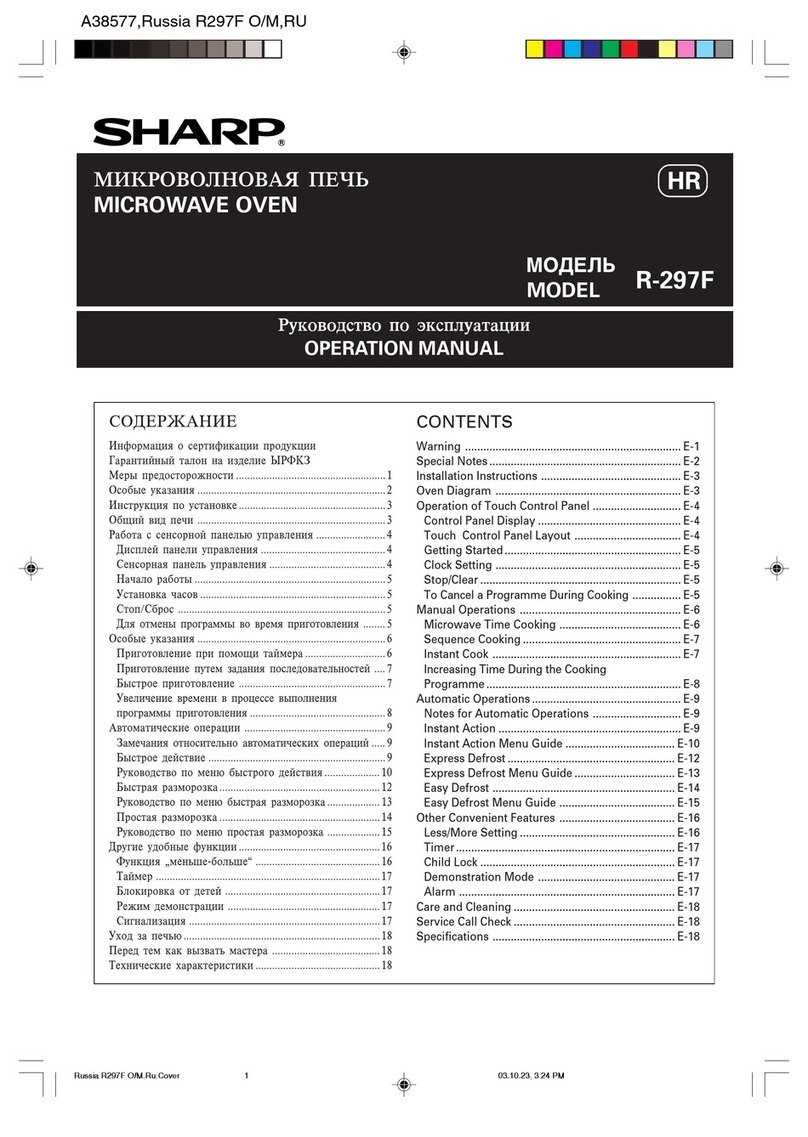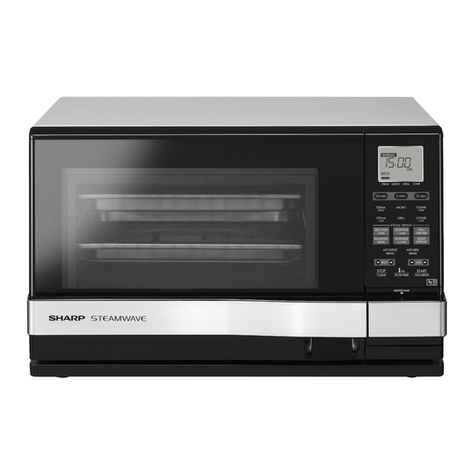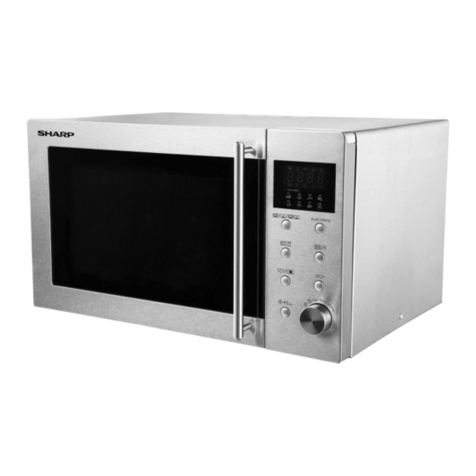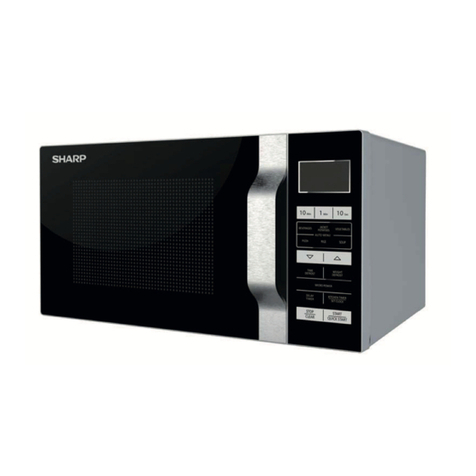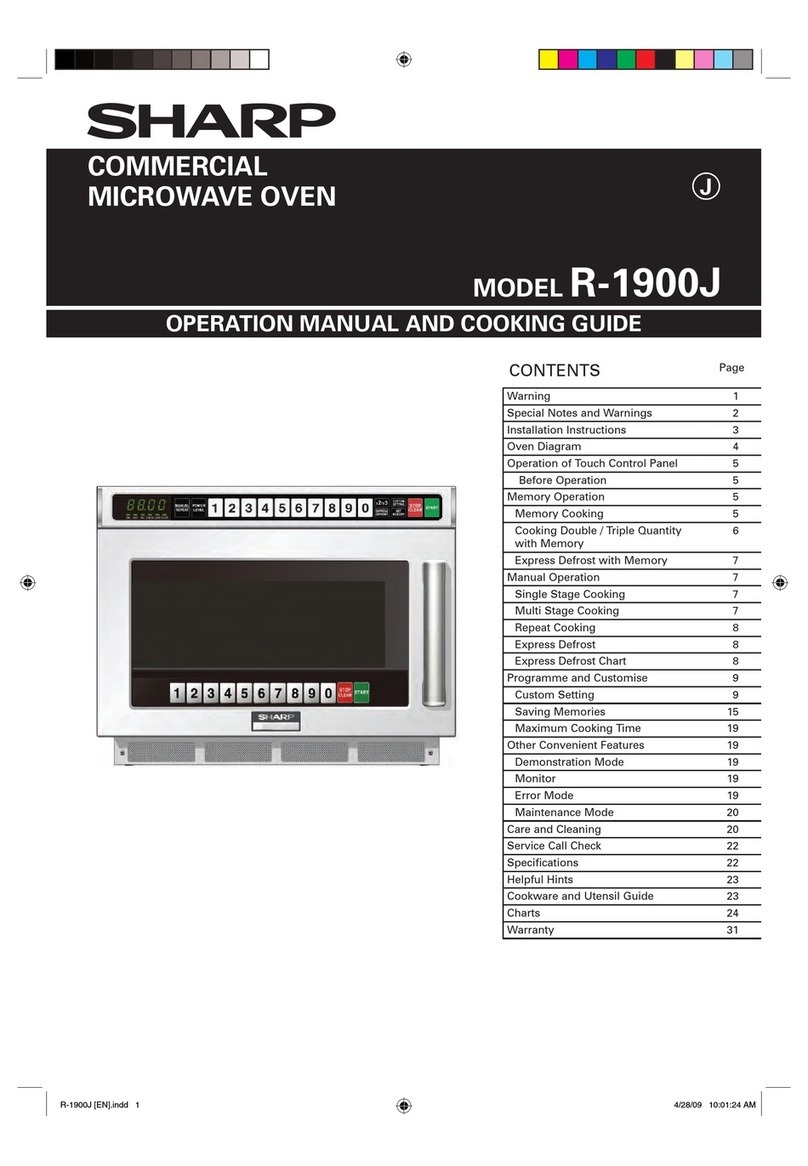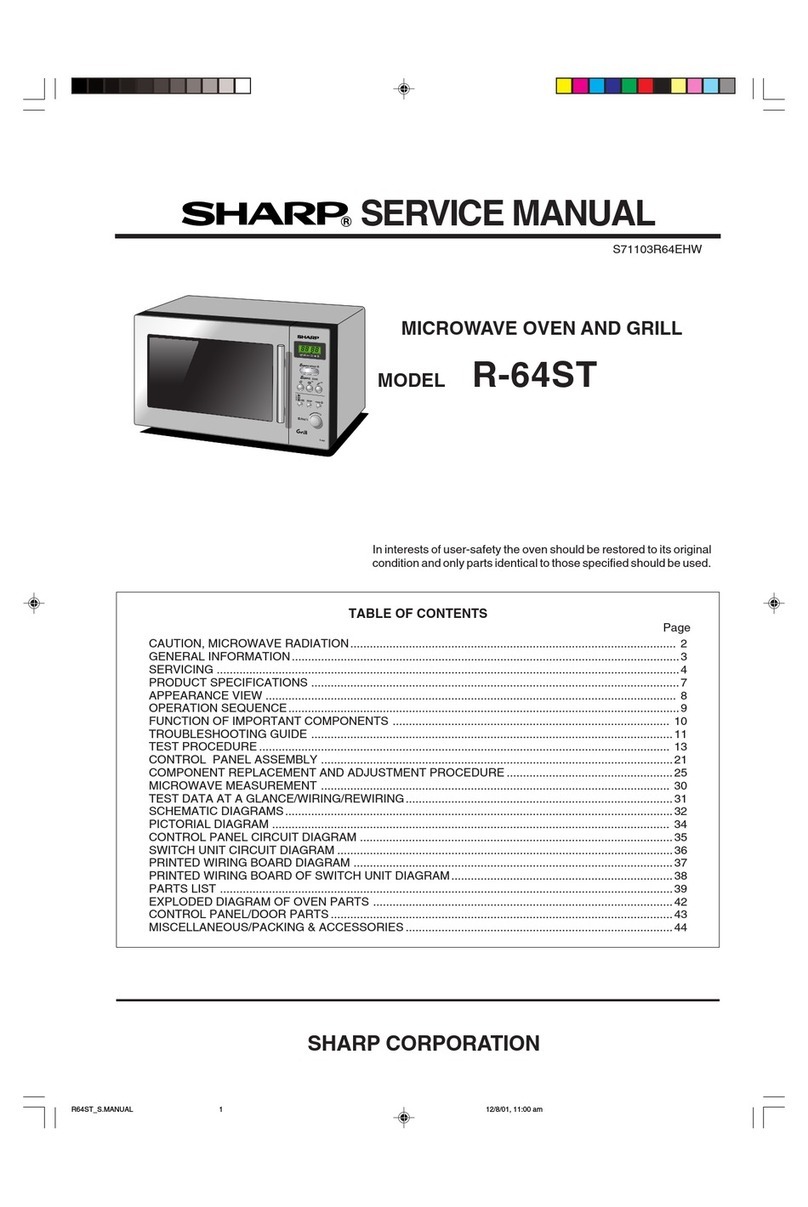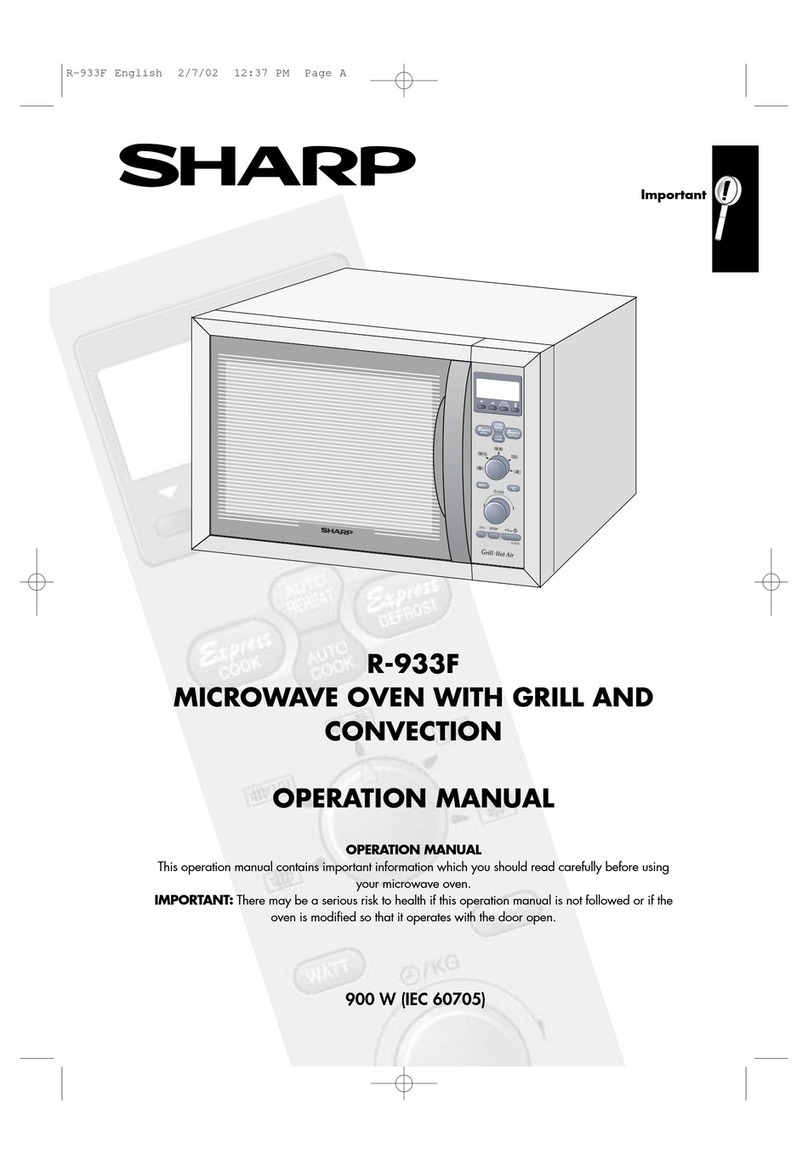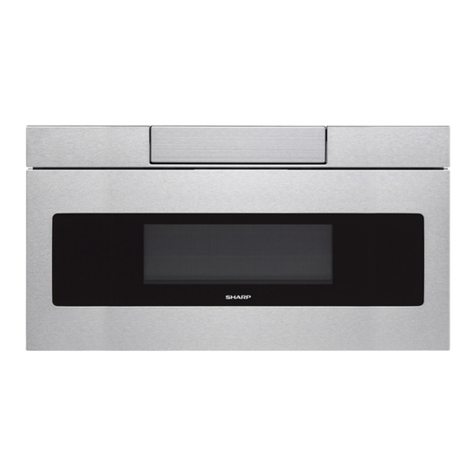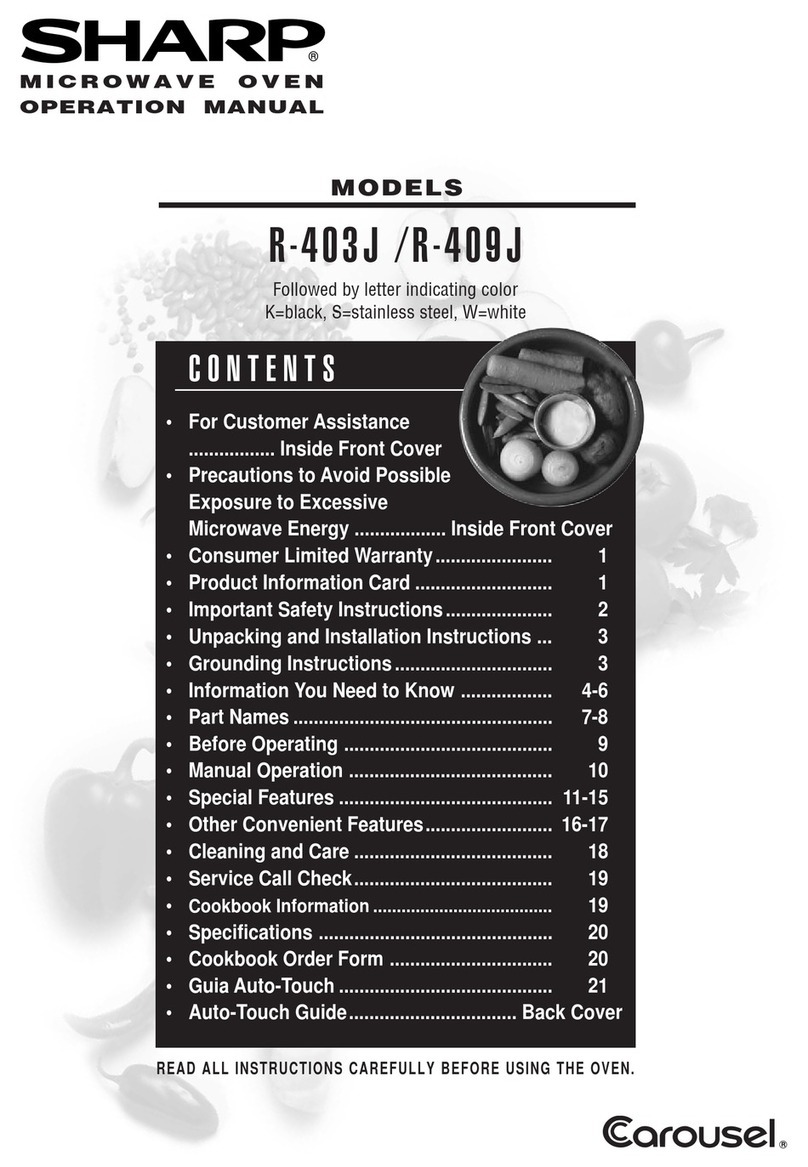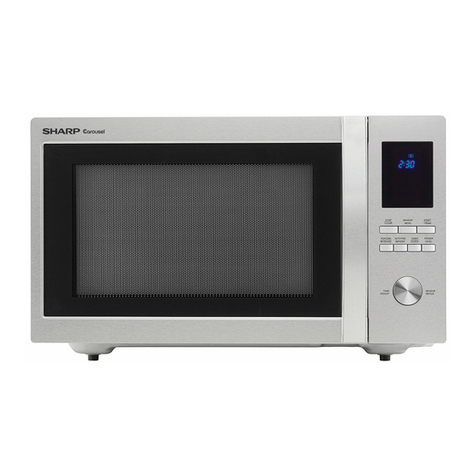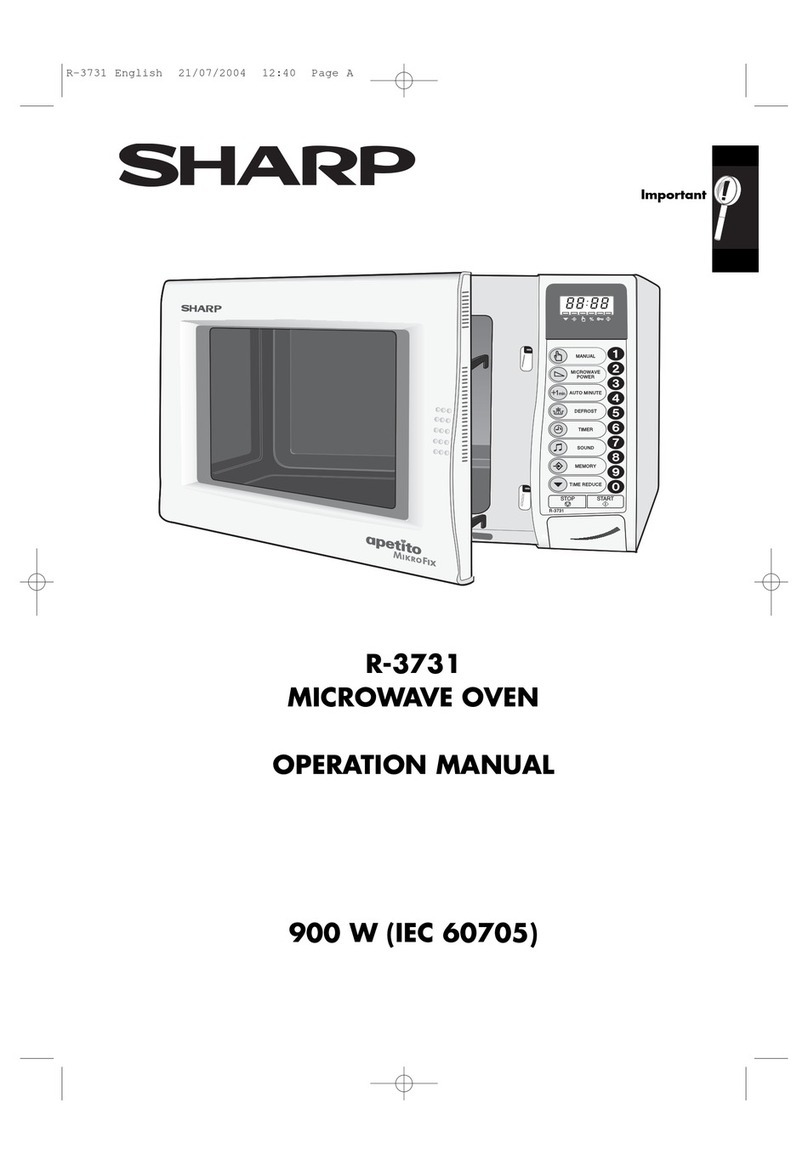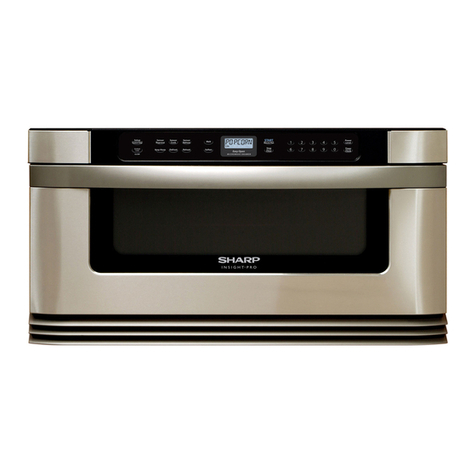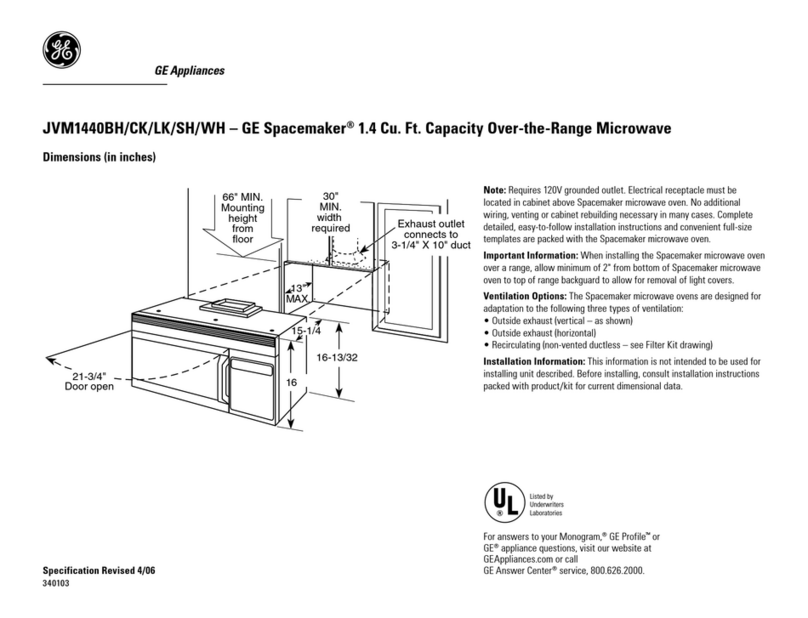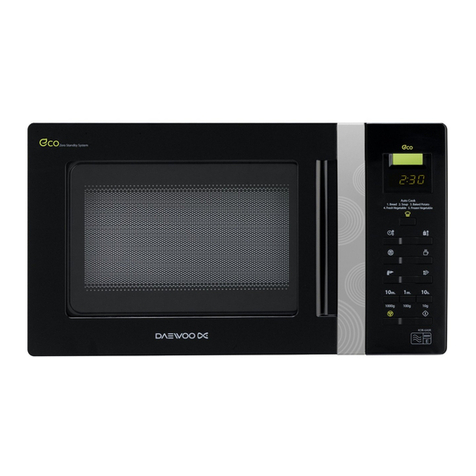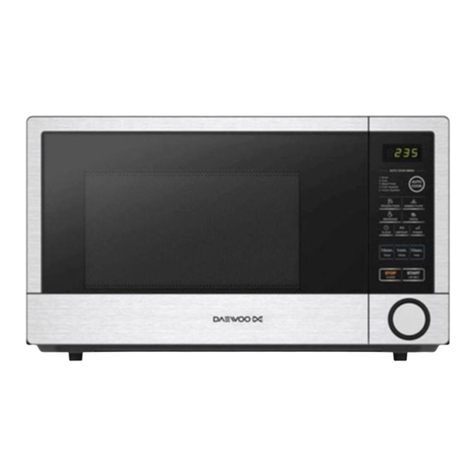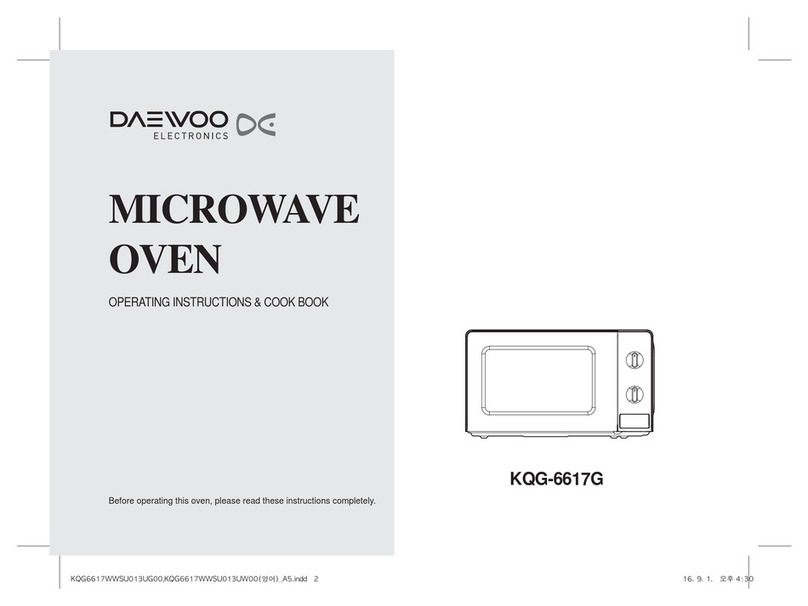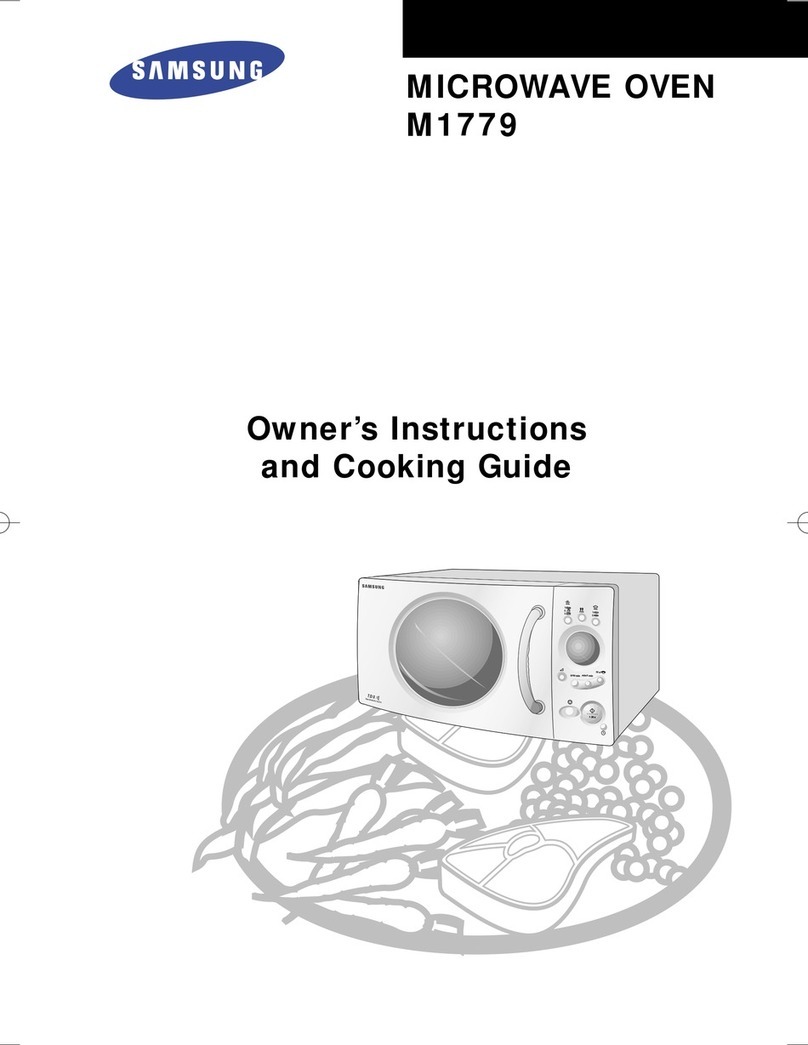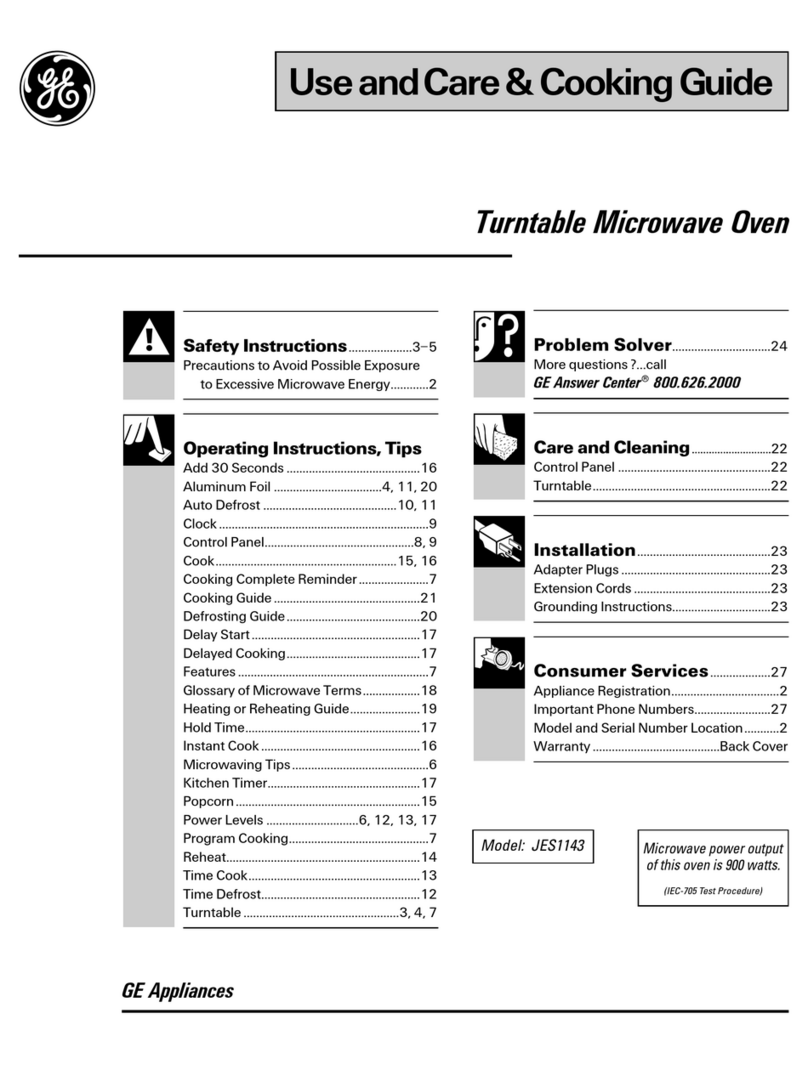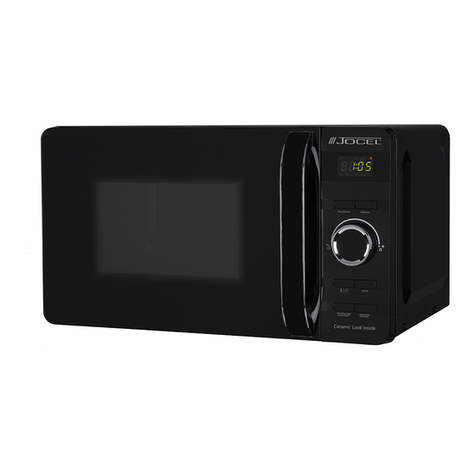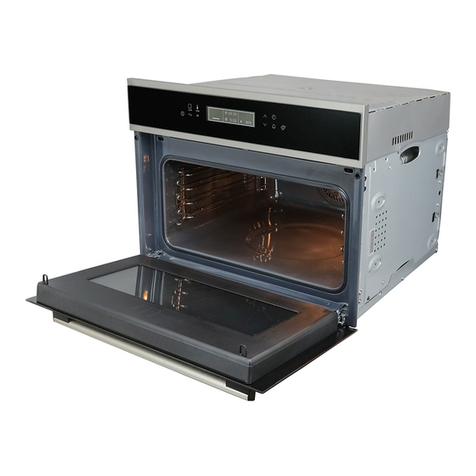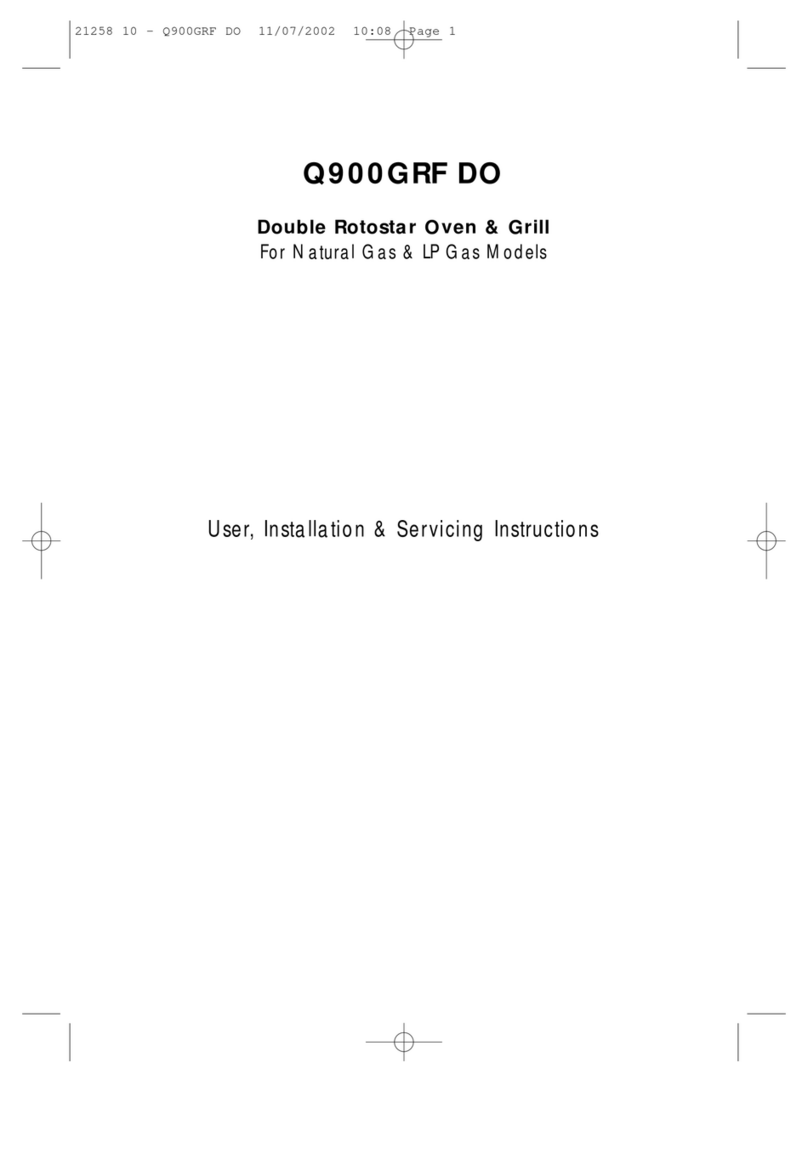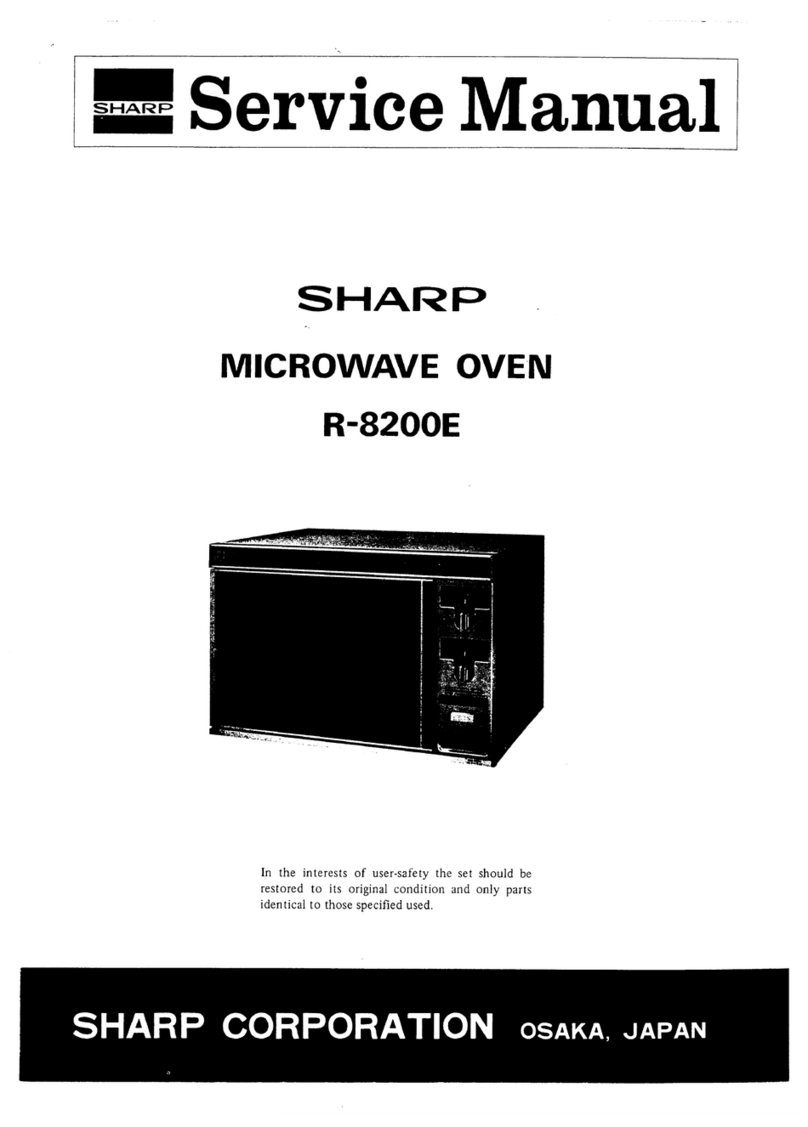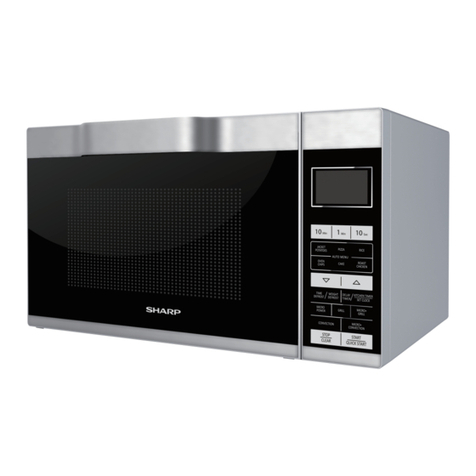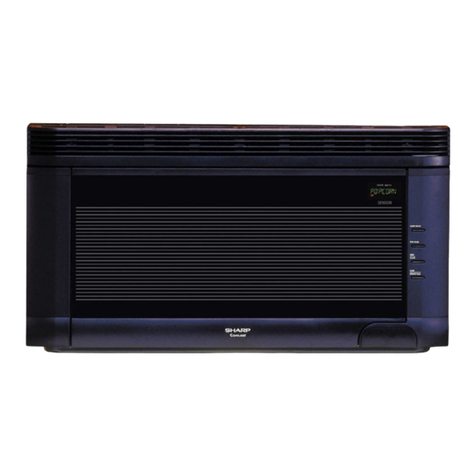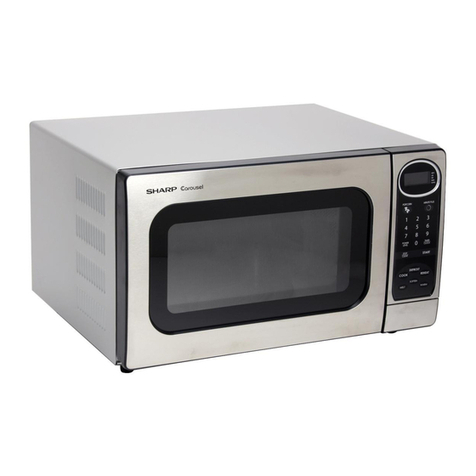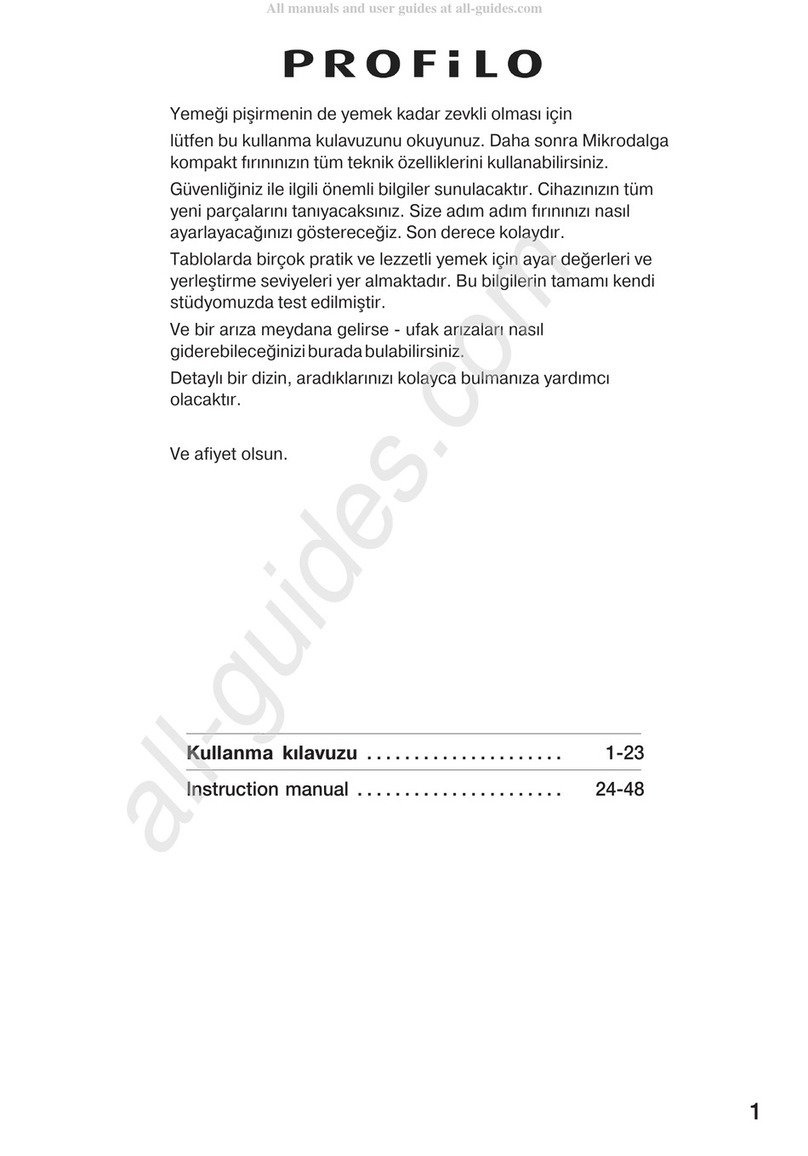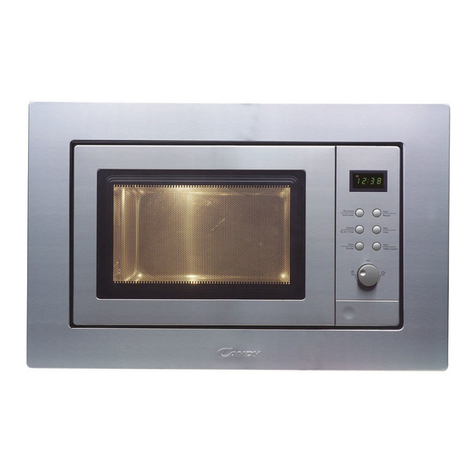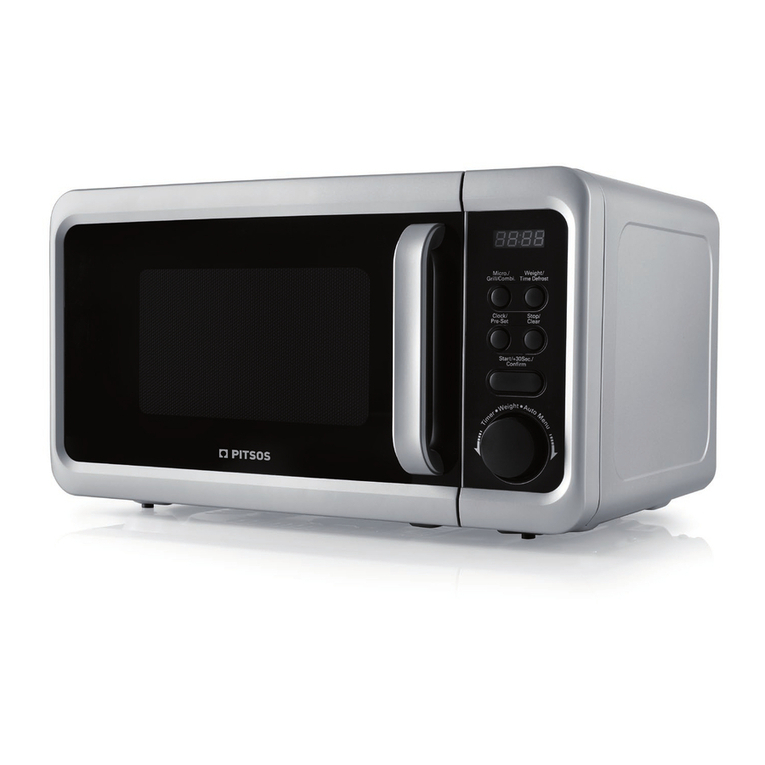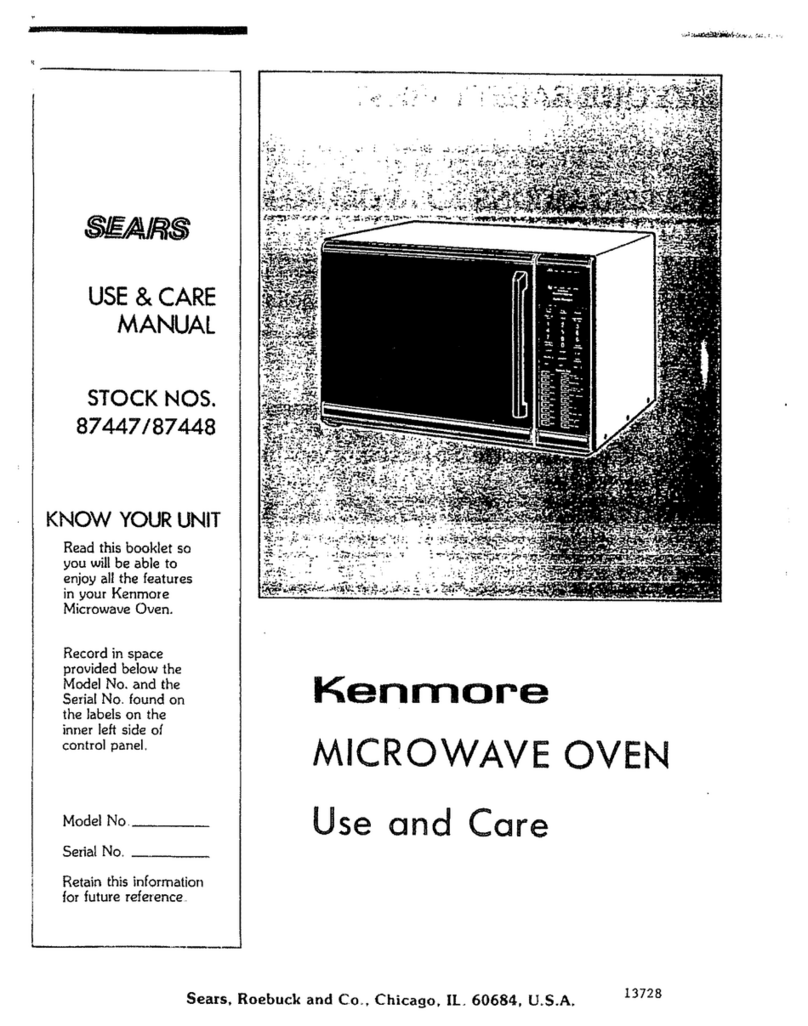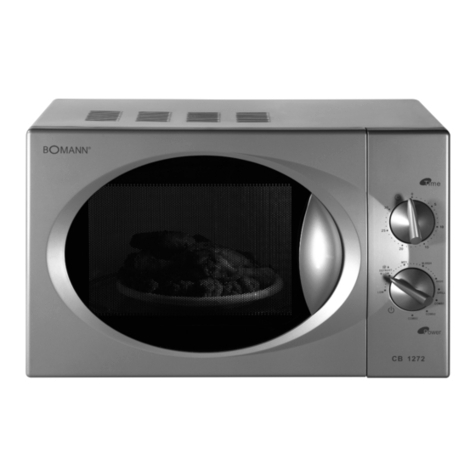TABLE OF CONTENTS
Page
FOREWORD . . . . . . . . . . . . . . . . . . . . . . . . . . . . . . . . . . . . . . . . . . . . . . . . . . . . . . . . . . . . . . . . . . ..l
CAUTION, MlROWAVE RADIATION . . . . . . . . . . . . . . . . . . . . . . . . . . . . . . . . . . . . . . . . . . . . . . .1
THUMB INDEX..................................................................l
CHAPTER I PRODUCT DESCRIPTION . . . . . . . . . . . . . . . . . . . . . . . . . . . . . . . . . . . . . . . . . . . . . .5
Explanation of Microwave Cooking and Convection Cooking. . . . . . . . . . . . . . . . . . . . . . . . . . . . . . . . . . .5
Specifications. . . . . . . . . . . . . . . . . . . . . . . . . . . . . . . . . . . . . . . . . . . . . . . . . . . . . . . . . . . . . . . . . .5
CHAPTER II OPERATING INSTRUCTIONS . . . _. . . . . . . . . . . . . . . . . . . . . . . . . . . . . . . . . . . . .6
Operation of Auto-TouchTM Control Panel . . . . . . . . . . . . . . . . . . . . . . . . . . . . . . . . . . . . . . . . . . . _ . .6
Auto-TouchTM Control Panel . . . . . . . . . . . . . . . . . . . . . . . . . . . . . . . . . . . . . . . . . . . . . . . . . . . . . . .7
Auto-TouchTM Operation Check . . . . . . . . . . . . . . . . . . . . . . . . . . . . . . . . . . . . . . . . . . . . . . . . . . . . .8
Operation for Clock Setting. . . . . . . . . . . . . . . . . . . . . . . . . . . . . . . . . . . . . . . . . . . . . . . . . . . . . . . . .9
Operation for Microwave Cooking . . . . . . . . . . . . . . . . . . . . . . . . . . . . . . . . . . . . . . . . . . . . . . . . . . . 10
Introduction to Convection Cooking. . . . . . . . . . . . . . . . . . . . . . . . . . . . . . . . . . . . . . . . . . . . . . . . . .I3
Accessories...................................................................13
ConvectionHeating.............................................................l3
Convection Broiling. . . . . . . . . . . . . . . . . . . . . . . . , . . . . . . . . . . . , . . . . . . . . . . . . . . . . . . . . . . . .I4
MixCooking.-.................................................................i5
MixRoasting.................................................................15
MixBaking....................................................................16
Operation for Convection Cooking . . . . . . . . . . . . . . . . . . . . . . . . . . . . . . . . . . . . . . . . . . . . . . . . . . .17
Operation for Mix Cooking. . . . . . . . . . . . . . . . . . . . . . . . . . . . . . . . . . . . . . . . . . . . . . . . . . . . . . . .21
Operation for Special Function Cooking . . . . . . . . . . . . . . . . . . . . . . . . . . . . . . . . . . . . . . . . . . . . . .24
Operation for Auto Start Cooking . . . . . . . . . . . . . . . . . . . . . . . . . . . . . . . . . . . . . . . . . . . . . . . . . . .27
Operation for Memory Cooking. . . . . . . . . . . . . . . . . . . . . . . . . . . . . . . . . . . . . . . . . . . . . . . . . . . . .29
CHAPTER Ill OPERATION . . . . . . . . . . . . . . . . . . . . . . . . . . . . . . . . . . . . . . . . . . . . . . . . . . . . . .31
Normal Cooking Sequence . . . . . . . . . . . . . . . . . . . . . . . . . . . . . . . . . . . . . . . . . . . . . . . . . . . . . . . .31
Description of Operating Sequence (Australia Model). . . . . . . . . . . . . . . . . . . . . . . . . . . . . . . . . . . . . . .31
OffCondition.....................................................,.......31
Microwave Cooking Condition. . . . . . . . . . . . . . . . . . . . . . . . . . . . . . . . . . . . . . , . . . . . . . . . . .32
HighCooking.........................................................32
Medium High, Medium or Medium Low/Defrost Cooking . . . . . . . . . . . . . . . . . . . . . . . . . . . .32
Convection Cooking Condition . . . . . . . . . . . . . . . . . . . . . . . . . . . . . . . . . . . . . . . . . . . . . . . . .33
Preheating Condition. . . . . . . . . . . . . . . . . . . . . . . . . . . . . . . . . . . . . . . . . . . . . . . . . . . .33
Convection Cooking Condition . . . . . . . . . . . . . . . . . . . . . . . . . . . . . . . . . . . . . . . . . . . . .33
Automatic Mix Cooking Condition. . . . . . . . . . ~ . . . . . . . ., . . . . . . . . . . . . . . . . . . . . . . . . . . . .34
Description of Operating Sequence (South Africa Model) . . . . . . . . . . . . . . . . . . . . . . . . . . . . . , . . . . . .38
I
/ OffCondition.............................................................38
I Microwave Cooking Condition. . . . . . . . . . . . . . . . . . . . . . . . . . . . . . . . . . . . . . . . . . . . . . . . . .38
HighCooking.........................................................38
Medium High. Medium or Medium Low/Defrost Cooking . . . . . . . . . . . . . . . . . . . . . . . . . . . ..38
Convection Cooking Condition . . . . . . . . . . . . . . . . . . . . . . . . . . . . . . . . . . . . . . . . . . . . . . . . .39
I Preheating Condition. . . . . . . . . . . . . . . . . . . . . . . . . . . . . . . . . . . . . . . , . . . . . . . . . . . .39
I Convection Cooking Condition . . . . . . . . . . . . . . . . . . . . . . . . . . . . . . . . . . . . . . . . , . . . ,3g
Automatic Mix Cooking Condition. . . . . . . . . . . . . . . . . . . . . . . . . . . . . . . . . . . . . _ . . , . . . . . .40
I Description and Function of Components . . . . . . . . . . . . . . . . . . . . . . . . . . . . . . . . . . . , . . . . , . . . . .44
/ 0venh-w . . . . . . . . . . . . . . . . . . . . . . . . . . . . . . . . . . . . . . . . . . . . . . . . . . . . . . . . . . . ...44
I Cooling Fan Motor . . . . . . . . . . . . . . . . . . . . . . . . . . . . . . . . . . . . . . . . . . . . . . . . . . . . . . . . .44
I ’ Turntable Motor. . . . . . . . . . . . . . . . . . . . . . . . . . . . . . . . . . . . . . . . . . . . . . . . . . . . . . _ . . . .44
Thermistor...............................................................44
Magnetron Thermt! Cut-out. . . . . . . . . . . . . . . . . . . . . . . . . . . . . . . . . . . . . . . . . . . . . . . . . . . .44
1
CookRelay..............................................................44
2
t
